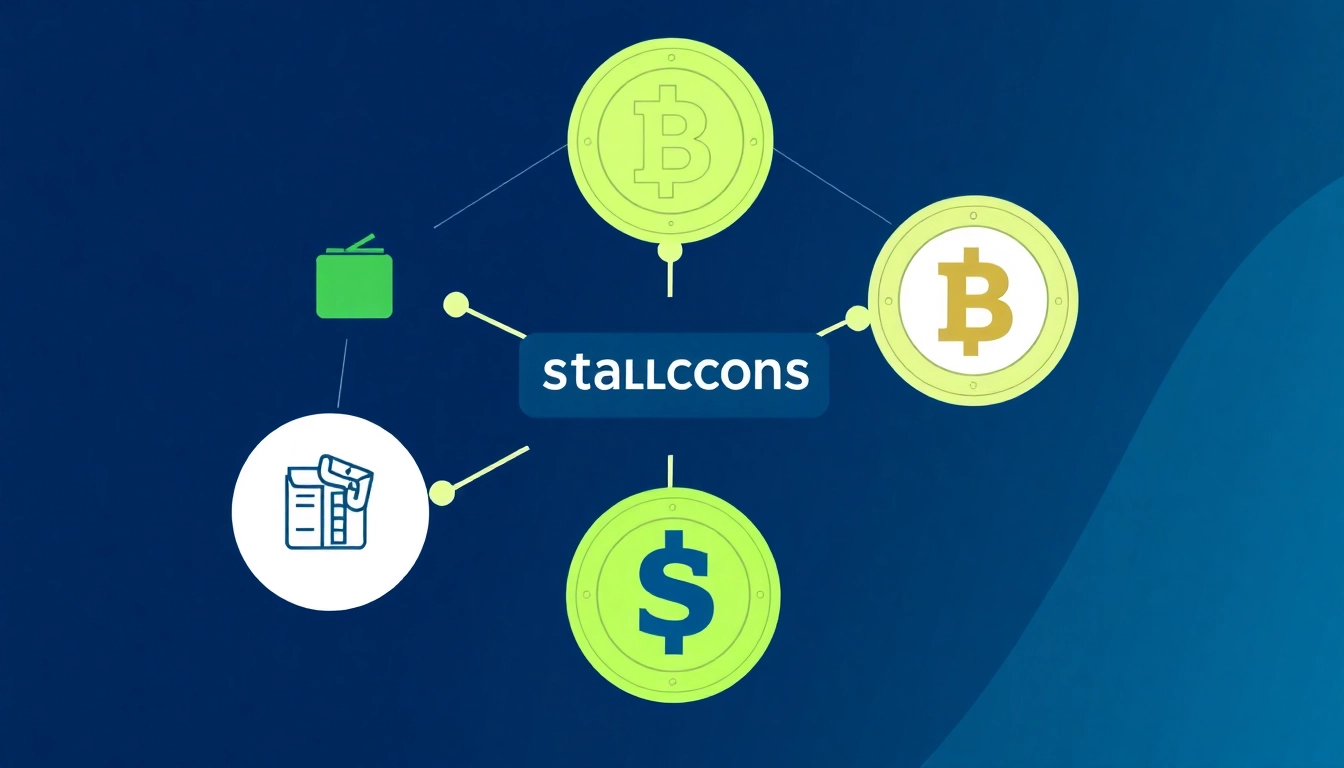
Introduction to Stablecoin Regulations and Their Significance
As the cryptocurrency ecosystem evolves at a rapid pace, stablecoins have emerged as a vital component maintaining stability amidst the volatility inherent in traditional digital assets. These digital currencies, pegged to real-world assets like fiat currencies or commodities, facilitate seamless transactions, serve as store of value, and enable efficient cross-border payments. However, their rapid growth has prompted regulators worldwide to establish comprehensive frameworks to ensure market stability, protect investors, and prevent illicit activities. For stakeholders—be it issuers, traders, or consumers—understanding the nuances of stablecoin regulations is critical to navigate this complex legal landscape effectively.
In recent years, regulators have intensified their focus, balancing innovation with oversight. The importance of robust regulations lies not only in safeguarding financial stability but also in fostering public trust, encouraging responsible innovation, and preventing systemic risks. In the context of pervasive digital transformation, the regulatory environment for stablecoins is evolving to address unique challenges presented by digital assets, such as transparency, reserve adequacy, and compliance with anti-money laundering (AML) and know-your-customer (KYC) standards.
Recent Legislation and Global Regulatory Trends in 2025
Overview of U.S. Stablecoin Legislation: The GENIUS Act
One of the most significant legislative developments in 2025 is the adoption of the GENIUS Act in the United States. This legislation aims to establish a clear regulatory pathway for stablecoin issuers, emphasizing reserve backing, transparency, and risk management. The act mandates that stablecoin issuers must hold reserves equivalent to each issued token, predominantly in short-term U.S. Treasury bills, to ensure full backing and mitigate the risk of de-pegging or insolvency.
Additionally, the GENIUS Act prohibits stablecoin issuers from offering yields or interest, aiming to limit speculative behaviors and promote stability. It requires comprehensive reporting, regular audits, and adherence to anti-money laundering standards, aligning with broader financial regulatory frameworks. Notably, this law permits smaller stablecoin issuers (market cap under $10 billion) to opt into regulation, fostering innovation while maintaining oversight.
For a detailed review, visit The GENIUS Act of 2025 Stablecoin Legislation Adopted in the US.
Comparative Analysis: Asia and Europe’s Approaches to Stablecoin Regulation
While the U.S. has prioritized reserve backing and transparency, Asian regulators have accelerated efforts to regulate stablecoins, especially as countries like Singapore, Hong Kong, and Japan recognize their transformative potential. These jurisdictions focus on licensing regimes, capital requirements, and AML standards, striving for a balanced approach that fosters innovation while mitigating systemic risks.
Similarly, the European Union’s Markets in Crypto-Assets (MiCA) framework, which has gained approval recently, aims to regulate stablecoins comprehensively. MiCA emphasizes consumer protection, transparency, and sustainable innovation through standardized licensing, disclosure requirements, and strict compliance obligations across member states.
These diverse approaches reflect regional priorities—U.S. emphasizes reserve integrity, Asia emphasizes licensing and AML, and Europe balances consumer protections with market unity. Collectively, these global trends indicate a more harmonized regulatory future, reducing friction for cross-border stablecoin use and fostering safer digital financial ecosystems.
Impacts of New Laws on Market Stability and Innovation
New regulations contribute significantly to market stability by establishing clear operational standards, reducing fraudulent practices, and ensuring issuer accountability. For example, reserve backing requirements help prevent sudden de-pegging, which can trigger cascade failures across interconnected financial systems.
For innovators, these laws may initially introduce compliance costs and operational adjustments, but in the long run, they provide a more predictable environment conducive to sustainable growth. Clear frameworks incentivize quality issuers to innovate within legal boundaries, fostering consumer confidence and enabling mainstream adoption.
Best Practices for Navigating Stablecoin Regulations
Compliance Strategies for Stablecoin Issuers
To succeed in this evolving environment, issuers must adopt proactive compliance strategies. These include implementing rigorous reserve management systems, maintaining transparent reporting protocols, and continuously updating internal policies to align with new legal requirements. Engaging legal and regulatory experts from inception ensures early identification of compliance gaps, reducing risks of sanctions or operational disruptions.
Developing collaborative relationships with regulators, participating in industry forums, and staying abreast of legislative updates help issuers adapt swiftly. Incorporating compliance automation tools and real-time audits can streamline reporting and improve transparency.
Risk Management and Transparent Reporting
Ensuring reserve adequacy and transparency is central to risk mitigation. Issuers should conduct regular independent audits, publish reserve disclosures, and implement risk management frameworks aligned with internationally recognized standards. Employing blockchain-based transparency features can enhance trust, allowing stakeholders to verify reserve backing seamlessly.
Robust risk management also involves scenario planning for potential crises, liquidity management flexibility, and contingency protocols to protect user assets and maintain operational integrity under adverse conditions.
Building Trust with Regulators and Consumers
Building trust requires commitment to regulatory compliance and consumer protection. Transparent communication, clear terms of service, and educating users about reserve backing and spending policies foster confidence. Establishing dedicated compliance teams, investing in cybersecurity infrastructure, and adhering to privacy standards are additional steps that reinforce credibility.
Consumer-centric approaches, such as accessible customer support and disclosures, also enhance reputation and ensure long-term stability in a competitive market.
Future Outlook: Evolving Regulatory Frameworks and Industry Impact
Predicted Regulatory Developments in 2026 and Beyond
The trajectory of stablecoin regulation suggests continued refinement of existing laws with an emphasis on global harmonization. Future frameworks are likely to integrate advanced technologies like blockchain analytics for AML compliance and real-time reserve monitoring. Regulatory agencies may introduce licensing regimes tailored for specific stablecoin models, such as algorithmic versus asset-backed stablecoins.
Moreover, governments may explore enabling regulatory sandboxes for innovative stablecoin projects, permitting live testing under regulatory oversight, which fosters innovation while managing risks effectively.
Potential Challenges and Opportunities for Stakeholders
Challenges include navigating increasingly stringent compliance requirements, managing operational costs, and addressing cross-jurisdictional discrepancies. However, these regulations also present opportunities—issuers can differentiate themselves through superior transparency, adopt cutting-edge risk management tools, and capture consumer trust in a competitive landscape.
Financial institutions and technology firms can leverage regulatory clarity to develop new products and services, expanding their market reach and operational resilience.
How Innovators Can Prepare for Increasing Regulations
Preparation involves investing in compliance infrastructure, engaging in ongoing legal education, and collaborating with industry associations. Embracing transparency as a core value and integrating regulatory considerations into product design ensure readiness for sudden regulatory shifts. Staying connected with policymaking processes and contributing feedback during consultation phases can influence balanced regulation that fosters growth.
Conclusion: Navigating the New Regulatory Environment for Stablecoins
Key Takeaways and Actionable Insights
The evolving landscape of stablecoin regulations underscores the importance of proactive compliance, transparency, and risk management. Issuers and stakeholders must stay informed about legislative developments locally and globally, ensuring their operations align with emerging standards.
Monitoring Regulatory Changes and Staying Informed
Regular engagement with industry publications, participation in conferences, and consultation with legal experts are vital for staying ahead. Digital tools and analytics can facilitate real-time compliance monitoring, helping stakeholders adapt swiftly to regulatory updates.
Building a Resilient and Compliant Stablecoin Ecosystem
Long-term success depends on creating a resilient ecosystem rooted in regulatory compliance, technological innovation, and consumer trust. Emphasizing transparency, reserve integrity, and proactive risk mitigation strengthens the stability and credibility of stablecoins as they transition from niche assets to mainstream financial instruments.






